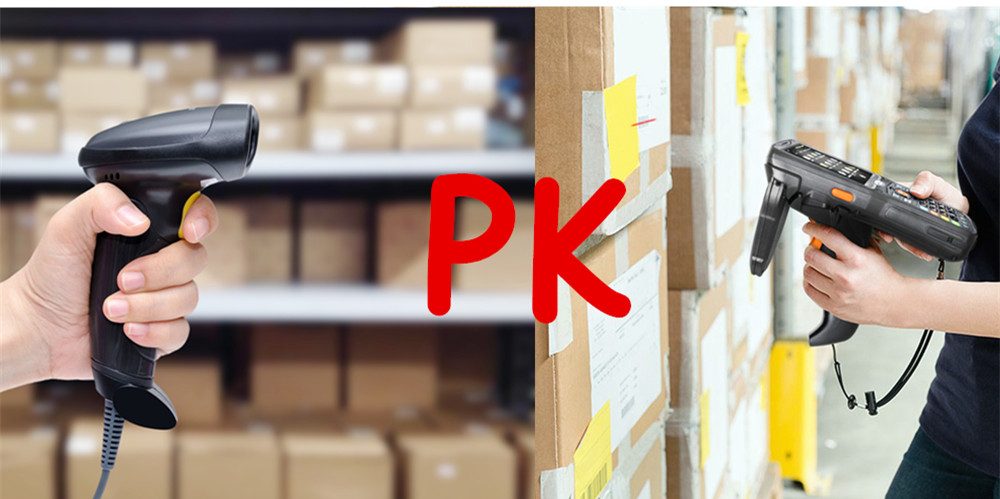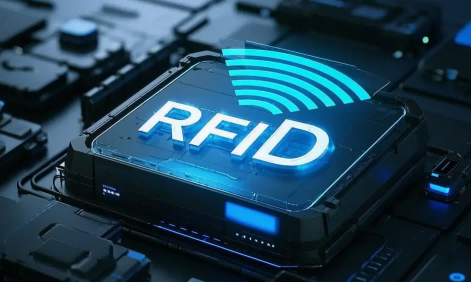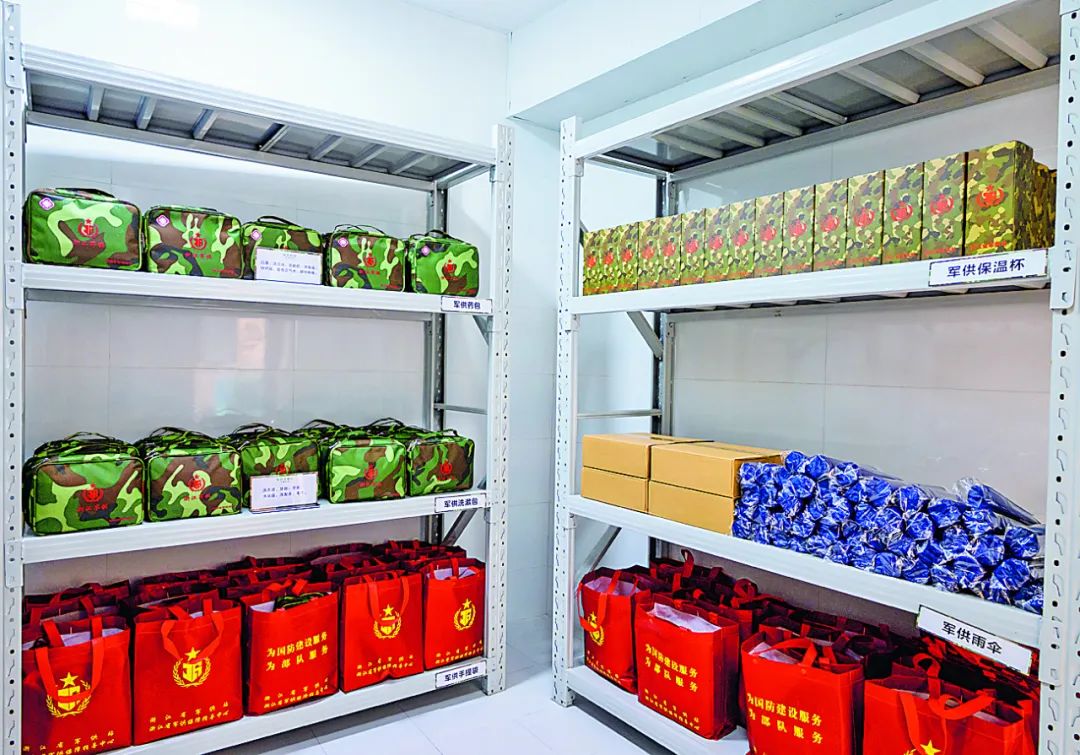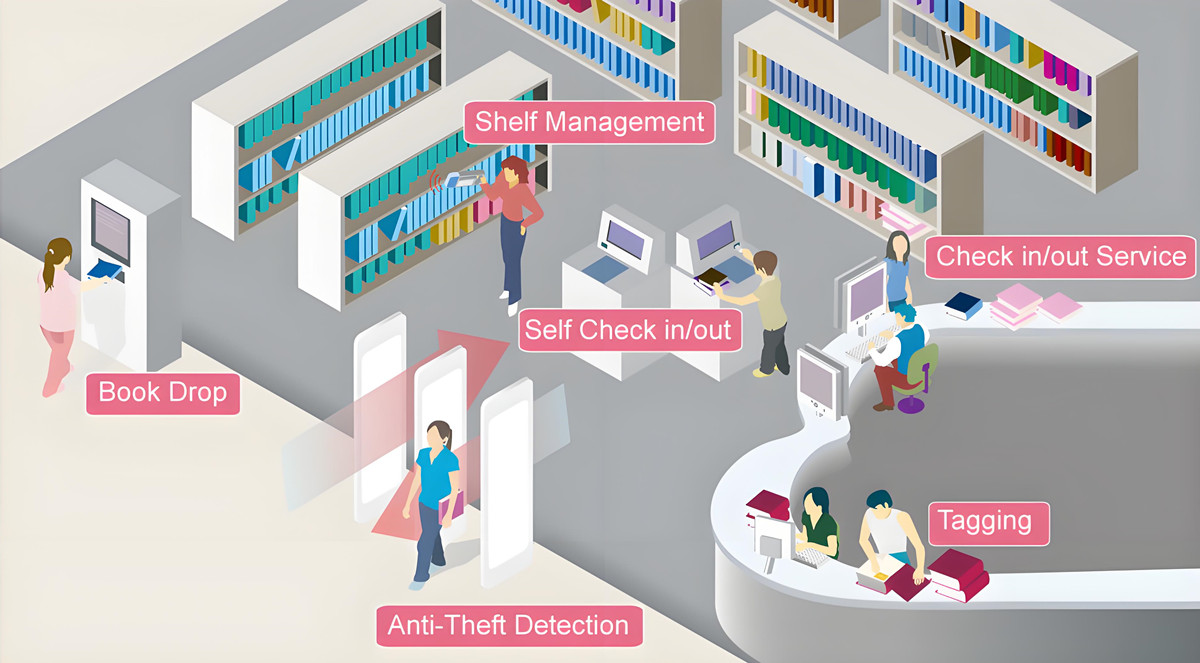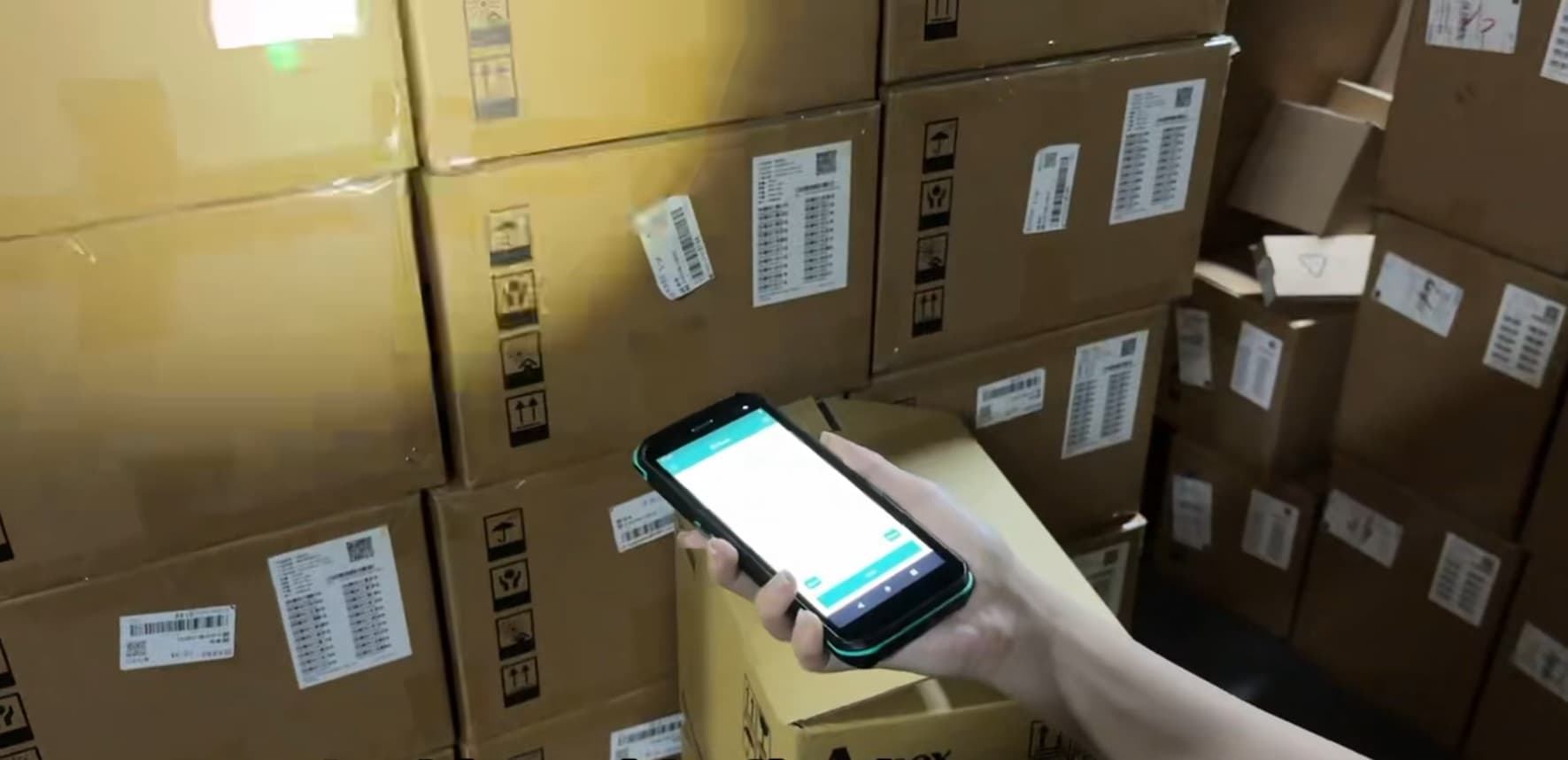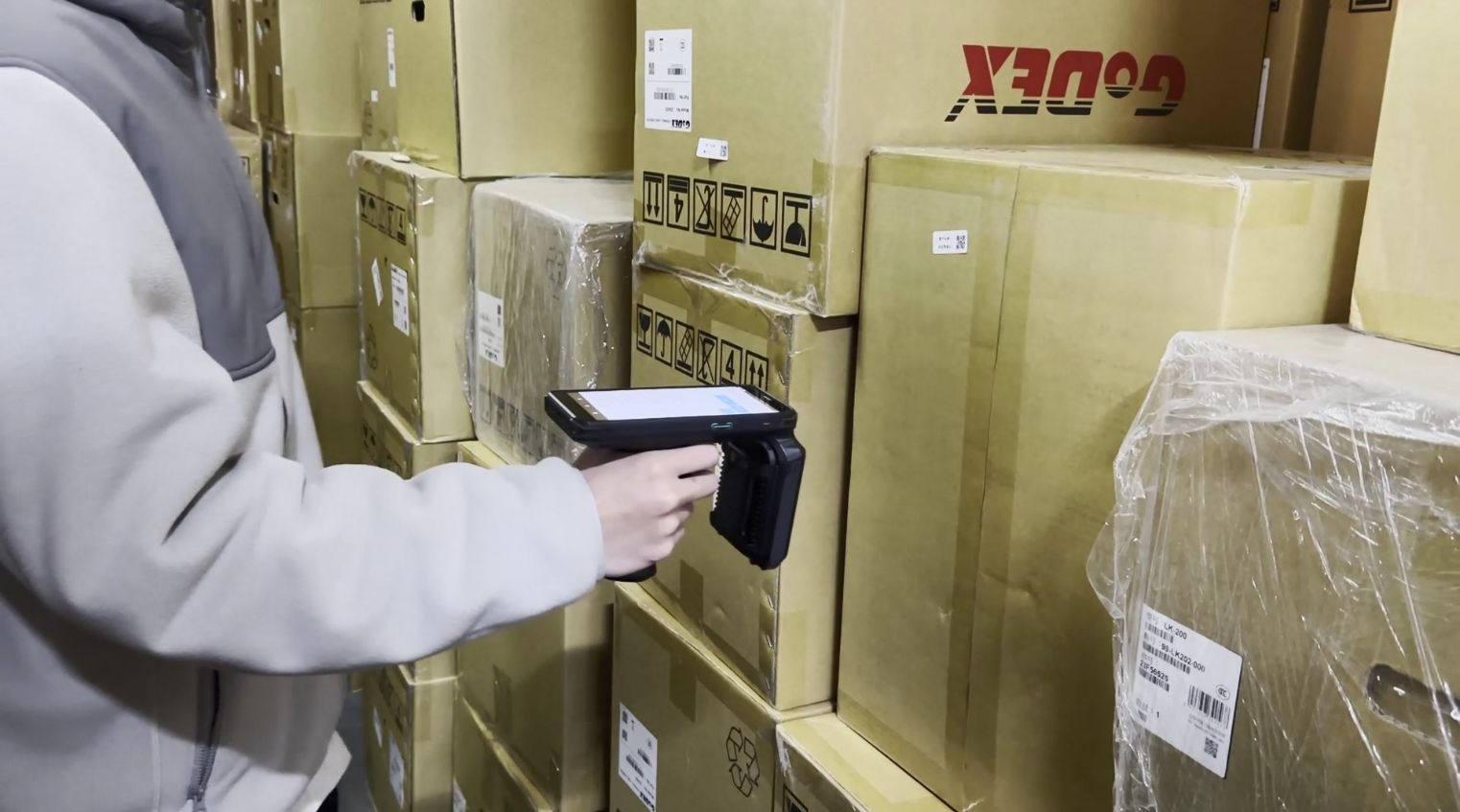Achieving Total Visibility in Military Warehousing: Our RFID-Driven Solution
Oct 30, 2025
In recent years, the military has prioritized addressing long-standing challenges in traditional material management, such as difficulties in asset tracking and low turnover efficiency. To advance the development of a modern military logistics system and enhance the modernization of logistical support capabilities, strengthening IT-driven warehousing for general supplies has become a key focus. The consistent integration of cutting-edge technologies—including the Internet of Things (IoT), big data, and artificial intelligence—into all stages of military material management has played a crucial role in this transformation.
As a leading RFID solutions provider in China, our company has been at the forefront of implementing RFID and IoT technologies in the management of military equipment and supplies. We have successfully delivered over a thousand projects across diverse sectors, including the armed forces, public security, armed police, fire services, coast guard, and emergency management, building extensive expertise and a proven track record in the field
Part 1. Military Equipment and Supplies Management - Operational Requirements
1. Offline Operation & Local Deployment
Operates fully offline with local deployment capabilities. Mission data can be securely synchronized via dedicated networks once connectivity is restored.
2. End-to-End Data Encryption
All data—both in transit and at rest—is encrypted using certified cryptographic protocols, ensuring full protection of classified material.
3. Hardware Resilience & Field Readiness
All equipment is engineered to military-grade environmental standards, guaranteeing stable performance under harsh field conditions.
4. Full Compliance with Military Protocols
Every process—from storage and deployment to usage, maintenance, and decommissioning—strictly adheres to established military governance and procedural guidelines.
Part 2.RFID-Based Military Asset Management: Solution Architecture
The RFID Military Asset Management Solution is built on a three-tiered logical architecture, comprising the Collection Layer, Application Layer, and Presentation Layer.
1. Collection Layer
Hardware components including RFID tags, handheld readers, fixed RFID readers, RFID printers, and RFID tunnel gates are utilized for data capture. Information can be gathered and transmitted to the system via offline modes.
2. Application Layer
This layer enables core functions such as batch inventory counting, intelligent asset management, allocation, issuance, maintenance, return, and automated in/outbound warehouse processes.
3. Presentation Layer
Authorized military supply personnel can access the Fengyijie RFID Asset System to view data and insights through multiple interfaces, including mobile devices, computers, RFID handheld readers, and display screens.
Part 3: Core Capabilities of the RFID Military Asset Management System
1. Digital Asset Identity
By binding RFID tags to physical assets, each item is assigned a unique digital identity. This enables precise, item-level management, allowing for instant access to specifications, responsible personnel, maintenance cycles, and real-time status. This ensures continuous monitoring and strengthens control over classified assets.
2. Automated In/Out Processing
RFID tunnel gates or all-in-one readers deployed at warehouse entry/exit points and handover areas automatically batch-scan and identify items during movement. This significantly accelerates logistics operations while minimizing manual errors.
3. High-Efficiency Inventory
Using RFID handheld readers, personnel can rapidly perform bulk inventory counts. Data is synchronized in real-time with the system backend, which automatically updates stock levels and generates statistical reports upon completion.
4. Maintenance & Servicing Tracking
Managers can schedule and process asset maintenance based on storage and usage requirements. The system records all servicing activities in real-time, creating a complete and traceable maintenance history for each item.
5. Automated Alerts
If assets pass through an RFID gate without a corresponding issued order, the system instantly identifies the discrepancy through tag scanning, triggers an immediate alert, and notifies relevant staff for prompt resolution.
6. Real-Time Querying
The system provides comprehensive query functions for records such as in/out transactions, stock levels, inventory counts, low-stock warnings, maintenance history, and asset details—enhancing operational planning efficiency.
7. End-to-End Traceability
Every asset movement—including transfers, handovers, usage scenarios, and transport details—is accurately logged. This ensures rapid traceability of custody and movement paths.
8. Data Visualization
The RFID management system automatically generates key data outputs such as inventory reports, usage frequency analytics, and maintenance alerts. By presenting asset availability intuitively, it enables rapid equipment allocation and enhances decision-making readiness.
Part 4: RFID Military Asset Management Case Studies
Our RFID Military Asset and Equipment Management System delivers end-to-end visibility across the entire asset lifecycle — from procurement and storage, to training use, maintenance, repair, and final decommissioning. This enables military units to achieve full awareness, traceability, and deployability of assets, breaking through traditional management bottlenecks while significantly enhancing operational efficiency and resource utilization.
To date, we have successfully deployed the system across numerous projects, building substantial industry expertise and a proven track record in the field. Selected case examples include:
1. Coast Guard – Vessel Asset Management
Challenges
Limited storage space, high density of mixed supplies, susceptibility of conventional labels to corrosion, and the requirement for offline operational capability.
Solution Implemented
A tailored RFID-based Asset Management System for maritime deployment.
Outcomes Delivered
· Accelerated inventory processes with rapid, batch scanning capabilities.
· Enhanced readiness and responsiveness of mission-critical supplies.
2.Military Unit - Warehouse Management System Modernization
Challenges
The unit operated four warehouses relying exclusively on manual record-keeping, leading to slow in/out processing and a high frequency of data errors.
Solution Implemented
A comprehensive RFID-based Asset Management System was deployed across all facilities.
Outcomes Delivered
· Achieved fully automated, batch-processing for warehouse operations.
· Significantly improved data accuracy and reliability across the supply chain.
3.Information Support Bureau - Warehouse Management Modernization
Challenges
The warehouse operated on a manual ledger system, requiring a transition to an intelligent, data-driven management platform.
Solution Implemented
Deployment of a customized RFID-based Asset Management System.
Outcomes Delivered
· Achieved rapid inventory counting through automated identification
· Realized intelligent warehouse management with real-time data visibility
4.Aviation Unit - Warehouse Management Modernization
Challenges
Manual inventory records were inconsistent and difficult to track, creating an urgent need for accurate electronic record-keeping.
Solution Implemented
Implementation of a customized RFID-based Asset Management System.
Outcomes Delivered
・Established a reliable digital inventory system with full data traceability
・Significantly improved management efficiency and operational accuracy
5.Military Unit - Warehouse Management Modernization
Challenges
The warehouse relied entirely on manual record-keeping, requiring an intelligent management system to achieve rapid inventory counting and digital transformation.
Solution Implemented
Deployment of a customized RFID-based Asset Management System.
Outcomes Delivered
・Clear and accurate digital inventory records
・Rapid inventory counting through automated identification
・Complete electronic archiving of asset data
6.Armed Forces Department - Warehouse Management Modernization
Challenges
The warehouse operated with manual record-keeping and only one computer, creating an urgent need for rapid and accurate in/out logistics data capture.
Solution Implemented
Deployment of a customized RFID-based Asset Management System.
Outcomes Delivered
・Achieved fully automated batch processing for inbound and outbound operations
・Eliminated the need for manual data entry and registration
Professional RFID Solutions for Military Asset Management – Contact Us for a Customized Consultation.
--------
Read More


